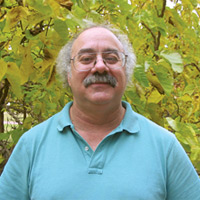Commentary: Marc Sher
 |
|
Photo courtesy of Marc Sher |
The two-body opportunity
Dual-career couple placement, known to most physicists as the "two-body problem," is a major issue in both academic and industrial hiring. It has a particularly disproportionate impact on women in physics. This is partly because the density of positions in physics is low, making it more difficult for a couple to find two jobs in the same general location, and partly because a much higher proportion of women than men are married to scientists.
Eight years ago, Laurie McNeil (then chair of the American Physical Society's Committee on the Status of Women in Physics) and I did a Web-based survey of problems and solutions that dual career couples had experienced, receiving over 600 responses, many of which had many detailed narratives. But since then, institutions have started to realize that the "two-body problem" can be a "two-body opportunity," and some welcome applications from couples.
There are several ways in which the two-body problem can be considered an opportunity. A typical search for a faculty position may generate a couple of hundred applications or more. The best of the applicants will likely get several offers. For the vast majority of research universities (namely, all of those that are not among the top ten or twenty elite institutions), it can be difficult to compete with the elite institutions that have much greater prestige and resources. Here, the two-body issue can be a golden opportunity, by providing an institution with a substantial competitive edge over more prestigious places.
Many applicants will happily go to an institution with somewhat less prestige and fewer resources, if their spouse can also be placed into a fulfilling position. One can even lure professors away from top-ranked institutions by assisting with a spousal situation. A two-body situation can also lead to greater faculty stability. Most institutions have experienced the difficult situation in which faculty leave for another institu-tion. With start-up costs for new faculty members in some fields approaching a million dollars, it can be disastrous for an institution when a faculty member leaves. Yet a couple is much more likely to be stable, simply because it is unlikely that they will both receive offers from elsewhere.
Dual career couples with faculty positions are much more satisfied with their job situation than others: During their early career, they have often been very stressed out by their situation, and they are so relieved to get jobs together. Thus the early investment in finding a position for a spouse will pay off in general satisfaction and productivity, and will substantially increase retention of top-notch faculty.
In addition, a faculty couple can provide excellent role models for undergraduate and graduate students. Many young students, especially women, are aware of the dual career situation and the scarcity of jobs; seeing a successful couple both doing physics in a nurturing environment can be extremely encouraging. It is an existence proof that the situation can be resolved. Institutions are now beginning to respond proactively to the dual career program. For example, an ADVANCE Work-Life Committee at the University of Rhode Island has proposed detailed guidelines for Dual Career Assistance. The University of Wisconsin is a national leader in working with dual career couples. Many other institutions are becoming more active in seeking out positions for spouses, and most are more aware of the advantages of hiring dual career couples.
In any discipline in which the density of positions is low, dual career couples will have difficulties finding jobs in the same area. In a male-dominated profession, these difficulties will disproportionately affect women. By considering the two-body problem as a two-body opportunity, institutions are demonstrating that they can get top-notch faculty, who are happy, productive, and likely to stay, and who provide an excellent role model for undergraduates.
Marc Sher is a professor of physics at the College of William & Mary, Virginia. This commentary is based on a longer piece he wrote for the Fall 2006 issue of the Committee on the Status of Women in Physics Gazette, available online via http://www.aps.org/programs/women/reports/gazette/upload/fall06.pdf. The survey by Sher and McNeil can be read at http://physics.wm.edu/dualcareer.html.
Click here to download the pdf version of this article.


